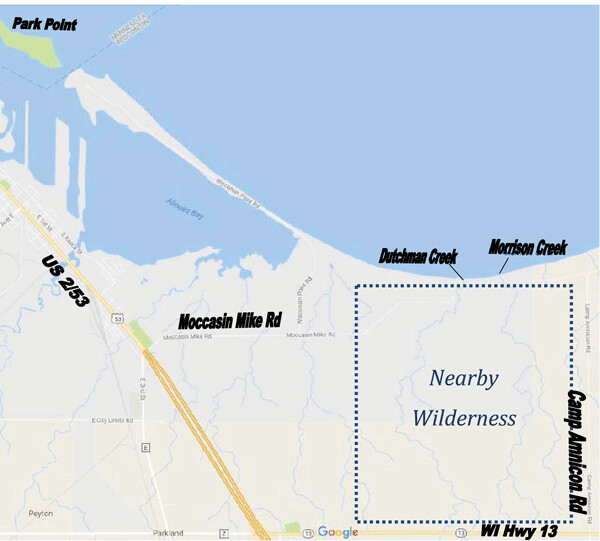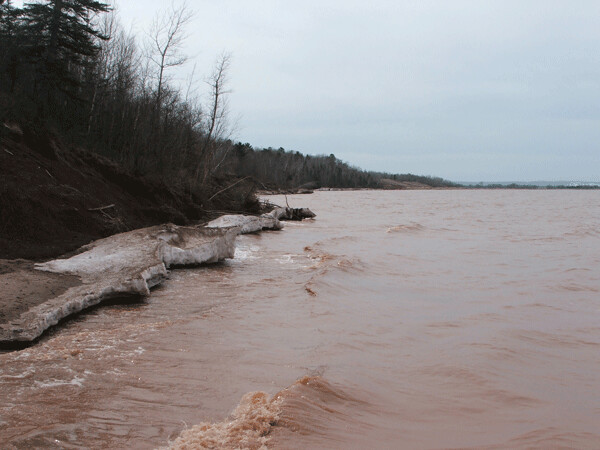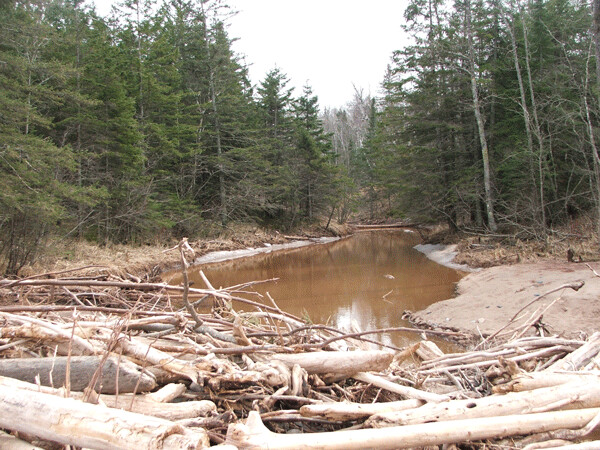News & Articles
Browse all content by date.

Two weekends ago, I took a walk to the end of Park Point in Duluth, something I hadn’t done in years. I had a great time rediscovering all the attractions of that area—the ruins of the old lighthouse, the weird historical privy hidden in the trees, the piers and break walls at the end. On the way back to my car, I took the beach on the Lake Superior side of the point. The hard-packed sand near the water’s edge was ideal for walking, and Mother Nature had placed tasteful arrangements of driftwood here and there for me to take pictures of. I recorded 15,000 steps on my Fitbit without even trying. It was more like a commercial for a walk than a walk.
The following weekend, I drove to the end of Moccasin Mike Road in Wisconsin. I wanted to repeat the Park Point experience on the South Shore. I dreamed of a hard-packed Lake Superior beach stretching from Dutchman Creek all the way to the mouth of the Amnicon River. I envisioned strolling along the beach, snapping pictures of lake wrack and scooping up treasures. I gloated over my expected Fitbit count. Big days really brought up the average.
Unfortunately, enjoying the South Shore experience turned out to require a little more work than I had anticipated. Right away, I had to pick my way across Dutchman Creek via a massive jam of logs and driftwood that had been left there by the winter. Mud-coated boards and wrecked things stuck out of the sluggish brown creek. When I finally arrived at the beach, I saw no smooth boulevard of sand stretching into the distance, but waves crashing into a shelf of ice. The ice was several feet thick and covered with sand and dirt. It started at the edge of the steep bluff and sloped across the narrow beach toward the lake. The waves had deeply undercut it. If you slipped off the shelf, you’d be in six inches of water, and you wouldn’t have an easy time climbing out.


On the plus side, the ice was hard and firm for walking, and all the sand on it helped with the footing. On the downside, tag alders and other brush stuck out of the ice in obstructive clumps that had to be thrashed through. The wall of the bluff rose higher and higher next to me, and then my way was blocked by a thick spill of mud. I tried to quickly run through it and sank up to my ankles in the slippery glop. Looking ahead, I saw that the steep hillside, saturated with spring water, had slid across the ice in many places.
The combination of slanted ice, slimy mudslides and freezing waves led me to reconsider my initial plan of skipping happily up the shore. I decided to climb into the woods and follow the shoreline from above. This was easier said than done. The bluff was impossible to climb. The soggy ground collapsed under my feet and mud filled my boots. I worked my way back along the ice shelf until I found a place that looked like it might provide a slightly firmer route upward. I scrambled up, but as I got to the upper reaches of the hillside I was back in the mud and grabbing at anything I could to keep moving forward. I finally got to the top.
I cleaned up by wiping my hands and clothes on trees. Following the lake along the top of the bluff was a big improvement. The ground was a little soft in spots but firm overall. I followed deer trails through the woods. Below me, Lake Superior was brown and mud-colored. Park Point’s pristine beach and crystal blue waters were less than five miles away, but something happened between there and here that turned the landscape into a dirty mess. I wondered whether passing through the city of Superior had anything to do with it.

Eventually the land dropped down and I came to Morrison Creek, another sluggish brown stream clogged with deadwood. I knew Morrison Creek, because Morrison Creek is one of several creeks that flows through one of the wildest and least-visited forests in the area—a place I call the Nearby Wilderness. Bounded by Wisconsin Highway 13, Camp Amnicon Road, Moccasin Mike Road and Lake Superior, the Nearby Wilderness is four or five square miles of woods and swamp that contains no civilization beyond a few deer stands—no roads, no snowmobile tracks, no hiking trails. The only way to get there is to park your car on the edge of a road in Wisconsin and plunge into the brush. They are not easy woods to walk in and they receive no publicity. In several visits to the Nearby Wilderness over the years, I have only seen one other person: Once, one ten-below-zero January morning, as I was sitting on an aspen log eating a Kit Kat bar and trying to convince myself I wasn’t lost, I watched a guy and his dog pass by on frozen Morrison Creek. They didn’t see me.
I crossed Morrison Creek on the deadwood jam. The beach ahead looked no more appetizing than the beach before: ice, mud, waves. I noticed the deep ruts of what could have been an old ATV (or horse-and-buggy) trail ascending the hill. The track was a gully of mud, overgrown with brush and blocked by deadfalls. I walked alongside it up the hill through the woods. I saw a popple trunk with its guts dug out and lying in a pile in front of it, as if the tree had committed hara-kiri. I ascribed the carnage to woodpeckers or a bear, not that I had any idea.
Bit by bit, the trail improved from impassable ruts to barely-passable ruts to an actual gravel road—Camp Amnicon Road, the eastern boundary of the Nearby Wilderness. If you drove out here in a car, you’d feel like you were deep in the boondocks, but I felt like I had emerged into civilization itself. I saw a fence and a gate and a No Trespassing sign and another sign that said if I was reading it my picture had already been taken by motion-activated camera and was even now winging its way to the Douglas County Sheriffs Department should they need to use it. So that was nice.
I continued to walk down Camp Amnicon Road, which was hard muddy ruts and soft muddy shoulders passing through swamp and woods. I passed about a dozen mailboxes and driveways, some with open gates, some closed. Five or six cars passed me, which I found to be a surprising amount of traffic. I waved at everybody and everybody waved back.
Camp Amnicon, which I knew from the map was located at the end of the road, is a Christian outdoor adventure camp. I thought I would walk until I saw the buildings of Camp Amnicon, but as I rounded a big bend in the road and still saw no buildings, I decided I had to stop. My knee was hurting and I could feel some chafing issues starting here and there. I ate an apple and drank some water and turned around and did the whole walk in the reverse direction, managing to accomplish it without wallowing in mud this time.
I recorded 16,000 steps on my Fitbit, which translates to 7.57 miles.
So that was fun. Are there any questions?
| Tweet |

